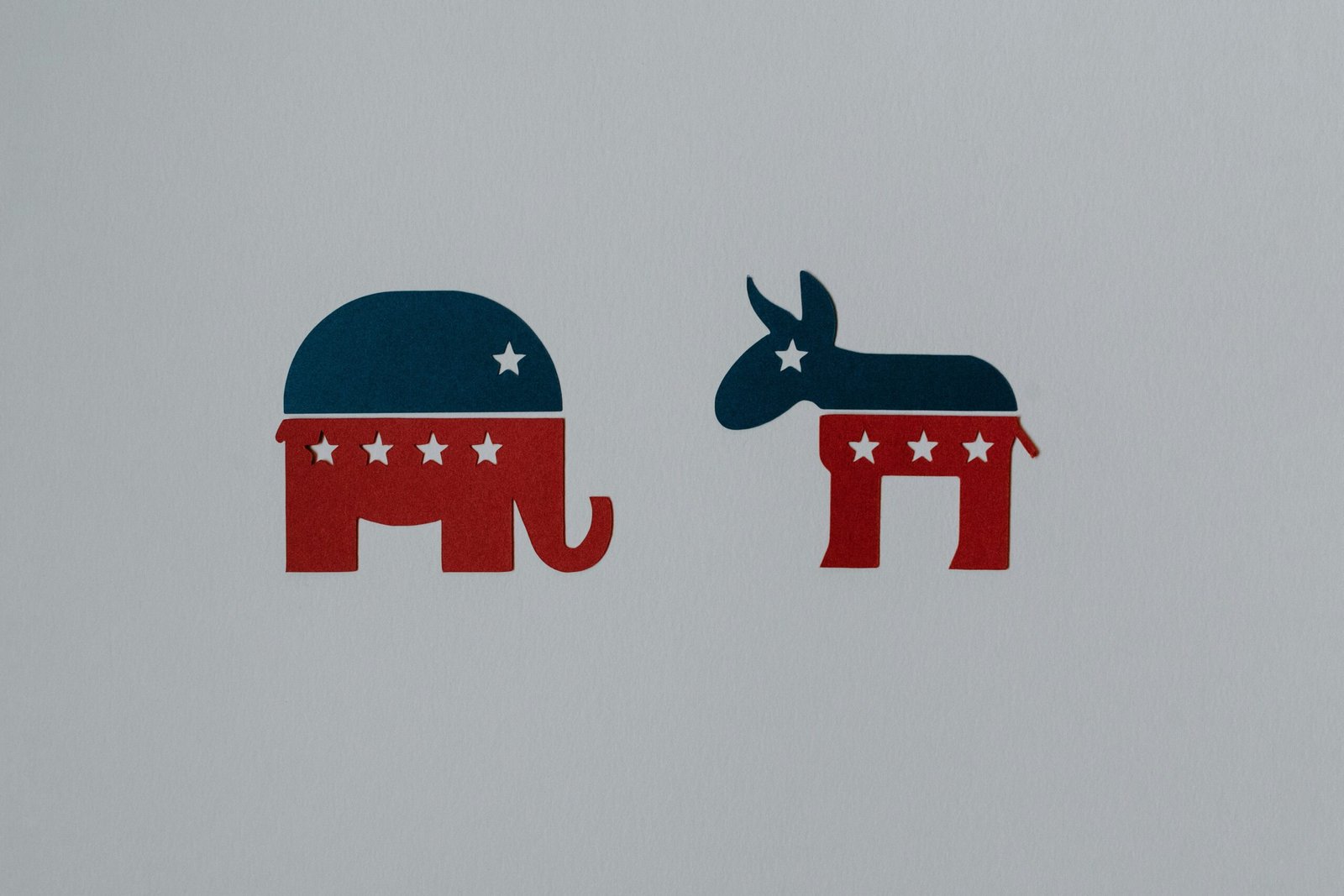Introduction
As August 9th, 2025, approaches, the political climate in America has increasingly become a topic of intense discussion and scrutiny. Under the shadow of profound divisiveness, the nation finds itself grappling with an atmosphere steeped in fear, anger, and uncertainty. The implications of the second administration of Donald Trump are significant, reshaping not only the political narratives but also the socio-political fabric of the United States. This period marks a pivotal moment that could define the future trajectory of the country.
The political landscape has evolved into a battleground of ideological extremes, where discourse often spirals into hostility. Citizens are polarized, with many expressing alarm over what they perceive to be the erosion of democratic values, as factionalism deepens. The transformations initiated during the Trump administration have catalyzed reactions that span the breadth of American society. From grassroots movements advocating for change to stark opposition rallies, the dichotomy underscores a nation at odds with itself.
Moreover, the implications of Project 2025—an initiative linked to Trump’s vision for governance—are profound. This project envisions a reshaping of policies across various sectors, including immigration, healthcare, and the judiciary. Its goals have ignited passionate debates, wherein advocates assert the necessity of these changes for national strength, while detractors contend that such initiatives threaten civil liberties and exacerbate existing inequalities.
In this environment, citizens remain wary of the future. The uncertainty surrounding policy changes, combined with the charged political atmosphere, has led to a pervasive sense of apprehension. As America navigates the complexities of this charged political milieu, it must confront its divisions while grappling with the harsh realities of its current state. The actions taken in this period will undoubtedly resonate for generations to come, making it imperative to reflect on the current political climate as the date of August 9th approaches.
Understanding Project 2025: A Shift in Governance
Project 2025 has emerged as a pivotal initiative within the current political landscape, aiming to redefine governance in the United States. At its core, this project encapsulates a multifaceted strategy aimed at realigning political priorities and consolidating authority in a manner that some critics argue could undermine democratic principles. Developed under the influence of key political figures, including Stephen Miller, the initiative proposes significant alterations in policy formulation and implementation, affecting various levels of governance.
The primary goal of Project 2025 is to reshape how the federal government engages with the public and addresses national issues. By promoting a centralized approach to governance, advocates of the project argue that it enhances efficiency and accountability. However, such centralization raises questions about the balance of power and the potential erosion of checks and balances typically inherent in a democratic system. The initiative seeks to position itself as a counterbalance to what supporters view as excessive bureaucracy, striving instead for a streamlined process that prioritizes quick decision-making.
As Project 2025 progresses, the role of Stephen Miller cannot be overlooked. He has been instrumental in advocating for policies that align with the project’s vision, emphasizing a return to certain traditional governance principles while incorporating a more authoritarian approach. This duality reflects a significant shift in political ideology, where the emphasis lies not only on the effectiveness of governance but also on the consolidation of power within specific governmental frameworks.
Critics of Project 2025 caution that such shifts could lead to an erosion of democratic norms, citing concerns over civil liberties and the diminishing voice of local governance. The implications of this project are substantial, as it challenges the foundational tenets of democracy, suggesting a growing trend towards centralized authority at the expense of public engagement and transparency. In this context, understanding the trajectory of Project 2025 is essential for evaluating its long-term impact on America’s political landscape.
Authoritarian Policies: Detailed Analysis
The Trump administration has enacted various policies that have raised concerns about authoritarianism and their implications for civil liberties. Understanding these actions requires examining their nature and effects, especially as they diverge from previous administrations’ approaches. One notable example is the targeting of journalistic entities and the press. The administration has frequently labeled the media as “fake news,” creating an environment where reporters may face intimidation or hostility when reporting information critical of the government. This approach can erode public trust in journalism and constrain the ability of the press to operate independently.
Another area indicative of authoritarianism is the use of executive orders to bypass legislative processes. The Trump administration has employed this method extensively to implement policies ranging from immigration reform to environmental regulations. Such practices raise questions about the checks and balances provided by the legislative branch, potentially leading to an imbalance of power. The willingness to disregard or challenge longstanding norms, such as deferring to federal court rulings, further exemplifies a shift towards dictatorial governance, as it undermines the established rule of law.
Moreover, the administration’s approach to immigration policy, particularly through the implementation of family separation protocols and strict border enforcement, signals a stark departure from past practices. These policies not only infringe upon individual rights but also reflect a heightened prioritization of state control over humanitarian considerations. The rhetoric surrounding these policies often paints immigrants as threats, thus facilitating a broader acceptance of authoritarian measures by segments of the population.
Overall, the trend toward authoritarian governance under the Trump administration encompasses various dimensions including media suppression, executive overreach, and harsh immigration protocols. These policies collectively signify a potential shift in America’s political landscape that could have lasting consequences on civil liberties and democratic norms going forward.
Human Rights Abuses: A Growing Concern
The political landscape in the United States is increasingly marred by reports of human rights abuses, reflecting a concerning trend that merits closer examination. As legislation evolves and societal shifts take shape, numerous case studies demonstrate the extent to which individuals and communities are affected. Particularly within marginalized populations, the implications of such abuses are often severe and far-reaching.
For instance, the treatment of immigrants at the southern border has raised alarm among various human rights organizations. Reports reveal instances of family separations, inadequate medical care, and unhealthy living conditions in detention centers. Children, in particular, are impacted by these policies, suffering both physical and psychological consequences that will affect their futures. These conditions not only challenge the moral fabric of the nation but also signify a broader disregard for human rights.
Additionally, the rise of systemic racism and discrimination against minority groups has exacerbated tensions within societal structures. Instances of police brutality, often captured on video, have catalyzed movements calling for accountability and reform. Such actions highlight an urgent need to address the disparities in how rights are exercised and protected across different demographics. The ramifications of these abuses extend beyond the immediate victims, creating a ripple effect that instills fear and silences dissent within communities.
The intersection of public policy and human rights remains a critical battleground. Legislative actions accompanying political agendas can either protect or undermine the rights guaranteed to all citizens. As the dynamics of power shift in 2025, it is imperative to scrutinize the human cost of these decisions and advocate for more effective protections. Failure to address these human rights abuses could result in further erosion of societal trust and cohesion, posing long-term challenges for America’s democratic principles.
Public Sentiment: Fear and Division Among Americans
As the political landscape in America evolves, particularly with the anticipated implications of Project 2025, public sentiment has been characterized by an atmosphere of fear and division. Recent surveys indicate that a significant portion of the population expresses anxiety regarding the future electoral and social environment. This fear is not solely rooted in political outcomes but extends deeper, reflecting concerns about the fabric of democracy, societal stability, and interpersonal relationships within communities.
Polls reveal that almost 60% of Americans feel increasingly divided along political lines, fostering an environment where conversations about differing viewpoints often lead to conflict rather than understanding. Interviews conducted with citizens from diverse backgrounds illustrate a prevalent sense of alienation. Many individuals report feeling apprehensive about openly discussing their political beliefs, fearful of the potential backlash from friends, family, or colleagues. This sense of fear has real implications, as it hinders honest dialogue and constructive debate essential for a robust democratic society.
Moreover, factors contributing to this emotional landscape include the proliferation of misinformation, the rise of extreme political ideologies, and increasing polarization in media narratives. These elements create echo chambers that reinforce existing beliefs, further entrenching divides among the populace. Many Americans express frustration with a perceived inability to bridge these divides, which exacerbates feelings of distrust toward fellow citizens and government institutions alike.
As the impacts of Project 2025 begin to materialize, understanding the emotional landscape of the American populace becomes critical. It is imperative to recognize that fear and division, if left unaddressed, could have long-lasting repercussions on civic engagement, elections, and overall societal harmony. Engaging in transparent dialogue and creating platforms for inclusive discussions might hold the key to mending the frayed edges of American society in these trying times.
The Role of the Media: Reporting in a Divisive Era
In the context of Project 2025, the media plays a pivotal role in shaping public narratives and perceptions surrounding its policies. As America navigates through an increasingly polarized political landscape, the media’s responsibility to provide accurate, balanced reporting has never been more significant. Journalists face mounting challenges, including an upsurge in misinformation and sensationalism, which can distort public understanding and trust in governmental directives.
One notable challenge is the prevalence of misinformation that spreads rapidly across various platforms. With the advent of social media, information can be disseminated swiftly, often outpacing factual reporting. This phenomenon complicates the task for journalists who strive to deliver reliable news. Many outlets grapple with the necessity to react quickly to emerging stories while ensuring that the information provided is accurate. Consequently, the urgency to break news can sometimes overshadow the commitment to thorough investigative journalism.
Sensationalism is another factor that complicates the media landscape. As outlets compete for audience attention in an era defined by 24-hour news cycles and clickbait headlines, there is a risk of prioritizing sensational stories over substantive analysis. Such an approach can lead to misinterpretation of Project 2025’s policies, contributing to public confusion. This sensationalistic trend diminishes trust in the media, as audiences become disenchanted with what they perceive to be a focus on entertainment rather than important political discourse.
Moreover, the media’s role in promoting transparency cannot be overstated, particularly concerning government initiatives like Project 2025. By holding officials accountable and questioning narratives, journalists can foster a more informed citizenry. The challenge lies in striking a balance between engaging storytelling and accurate reporting, ensuring that the public receives well-rounded perspectives rather than superficial impressions. In the current divisive era, the effectiveness of media in fulfilling this role will significantly influence public trust and understanding of critical political developments.
Legal Implications: Courts and Legislation Under Scrutiny
The implementation of Project 2025 has ushered in a series of legal implications that have captured the attention of courts and legislatures across the United States. As various policies associated with this initiative are enacted, the legal framework governing their enforcement has come under significant scrutiny. This scrutiny arises primarily from the perceived tension between governmental authority and individual rights, prompting a robust discourse within the judiciary.
Numerous significant court cases have emerged as critical reference points for understanding the legal battles surrounding Project 2025. For instance, cases challenging specific laws implemented as part of the initiative have been brought before federal courts, where judges are tasked with interpreting the constitutionality of these measures. Legal challenges often cite concerns about overreach of governmental power, potential infringements on civil liberties, and adherence to established legal precedents. Such cases serve to underline the complexities of enforcing policy while maintaining constitutional integrity.
Moreover, the legislative responses to Project 2025 have also been notable. In some instances, state legislatures have introduced bills intended to either support or counteract the federal initiatives, resulting in a patchwork of laws that complicate enforcement further. This divergence creates a situation in which courts must navigate conflicting state and federal regulations, often leading to landmark cases that set essential legal precedents. Additionally, the roles of various legal advocacy organizations have become increasingly pivotal, as they seek to protect individual rights and ensure that judicial reviews are conducted fairly.
The ongoing dialogue among legislative bodies, the judiciary, and civil society is likely to shape the future of Project 2025 and its associated legal implications. As courts continue to address these issues, the resulting legal interpretations will undoubtedly influence the broader political and social landscape of America in 2025 and beyond.
Resistance and Opposition Movements: A Counterforce
The political climate in America during 2025 has seen significant shifts towards authoritarianism, prompting a robust response from various resistance movements across the country. These movements emerged as a counterforce to the sweeping changes instituted by the ruling administration, which many citizens perceive as a threat to democracy and civil liberties. For various segments of society, notably grassroots organizations, labor unions, and civil rights advocates, the landscape shifted to one of increased activism and mobilization aimed at preserving democratic norms.
Resistance movements have adopted various strategies to build solidarity and amplify their messages. Social media has played a crucial role in organizing protests, disseminating information, and raising awareness about government actions perceived as undemocratic. These digital platforms allow for real-time communication, enabling activists from diverse backgrounds to connect, share resources, and coordinate efforts efficiently. Additionally, traditional methods of advocacy, such as peaceful demonstrations, lobbying, and strategic partnerships with civil society organizations, have gained traction as effective means of advancing their causes.
While there have been notable successes, including mobilizing significant public sentiment and influencing some legislative discussions, the resistance is not without challenges. The administration has responded with efforts to suppress dissent through measures such as increased surveillance, disinformation campaigns, and legal repercussions for activists. Such tactics have been designed to undermine the credibility of opposition movements and discourage public participation in protests. Despite these obstacles, the resilience displayed by these groups is indicative of a larger societal commitment to safeguarding democratic values against authoritarian encroachments.
In conclusion, the emergence of resistance and opposition movements in 2025 highlights the societal pushback against authoritarianism, signifying an ongoing struggle within America’s political landscape. Their strategies, successes, and setbacks in confronting the administration’s policies illustrate the complex dynamics between power and resistance. As these movements continue to evolve, they will likely play a crucial role in shaping the future of American democracy.
Looking Ahead: The Future of American Democracy
The trajectory of American democracy has been the subject of considerable discussion and analysis, particularly in the context of ongoing political transformations like Project 2025. As we look ahead, it becomes essential to consider the potential scenarios that may emerge if existing trends persist. The polarization of political discourse, growing discontent among constituents, and challenges to constitutional norms raise vital questions about the future stability and integrity of the democratic system.
One pertinent scenario involves the continued erosion of bipartisan collaboration. If political parties remain entrenched in their positions without reaching across the aisle, legislative gridlock may become the norm, inhibiting effective governance. This could lead to public disillusionment and disenfranchisement, which, in turn, may trigger widespread civic engagement movements pushing for reforms that restore faith in democratic processes.
Another possible outcome could be the rise of populism, driven by heightened economic inequality and social unrest. A populist wave could pave the way for leaders who prioritize their interests over democratic principles. Addressing these challenges will require a concerted effort from citizens, ensuring accountability and advocating for reforms to protect democratic practices.
Moreover, the influence of technology on politics must not be overlooked. The spaces created by social media and digital platforms can either facilitate informed discourse or exacerbate divisions. The public’s role in navigating this landscape is crucial as they seek reliable sources of information and engage in constructive dialogue.
Ultimately, the future of American democracy hinges on the collective actions of its citizens. Engaging in community discussions, participating in civic initiatives, and holding leaders accountable will be paramount in shaping a democratic future that honors foundational principles. While challenges remain, the path toward restoring balance and fostering a vibrant democracy is within reach, contingent upon the active involvement of all members of society.



